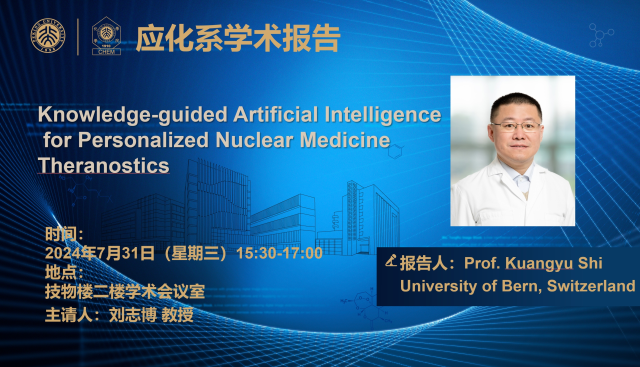
Abstract
Despite the success of radiopharmaceutical therapy (RPT), there is a belief that personalized treatment can further enhance treatment outcomes while maintaining low side effects. Developing personalized RPT poses greater challenges compared to external beam radiotherapy (EBRT) due to the complex dynamics of radiation dose delivery after intravenous injection of radiopharmaceuticals. Furthermore, conventional radiobiological modeling used in EBRT is not applicable to RPT due to increased dose complexity and tumor heterogeneity. While artificial intelligence (AI) has the potential to support personalization efforts, purely data-driven approaches have limitations in handling the multi-level heterogeneity present in RPT.
In this presentation, we'll delve into how AI can benefit from the integration of domain knowledge, such as physics, pharmacokinetic modeling, and computational biology, to advance personalized nuclear medicine theranostics. Specifically, we'll discuss the integration of spatial transcriptomics-based modeling into AI-driven drug development. These physiological models can offer valuable prior knowledge for refining and enhancing AI methodologies. The refined AI has the potential to revolutionize single-time-point dosimetry practices. Moreover, physiology-integrated deep learning holds promise for enhancing pre-therapy prediction of RPT dosimetry. Additionally, we'll explore how knowledge-guided AI can augment imaging applications in theranostics.
Biography
Prof. Kuangyu Shi is the Chief Medical Physicist and Head of the Lab for Artificial Intelligence and Translational Theranostics at the Department of Nuclear Medicine, University of Bern, Switzerland. Additionally, he is a senior lecturer at the Computer-aided Medical Procedure, School of Computation, Information & Technology at the Technical University of Munich, Germany. After obtaining bachelor in Nanjing University (1999), he did his Master and PhD at Max-Planck Institute for Informatics (2003-2008), Germany. Then he moved to Dept. Nuclear Medicine, Technical University of Munich for postdoctoral research and worked as subgroup leader from 2012 to 2018. On May 2018 he completed habilitation at Dept. Informatics, Technical University of Munich. His research is centered on advancing artificial intelligence and computational modeling techniques for nuclear medicine imaging and therapy, aiming to link the outcomes with underlying pathophysiological processes. Additionally, he is dedicated to developing both in vivo and ex vivo experimental methods, pushing the boundaries of microscopic nuclear imaging.